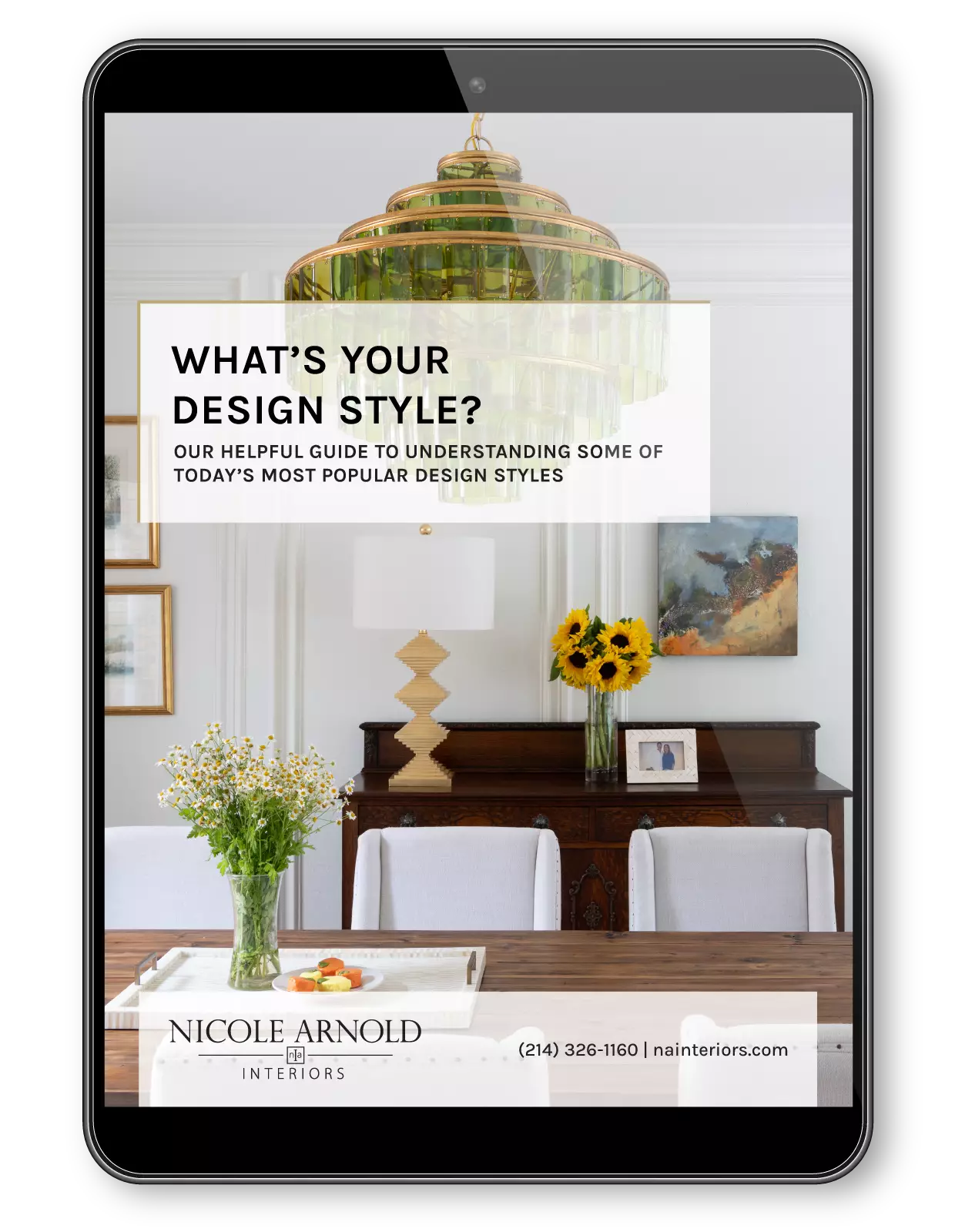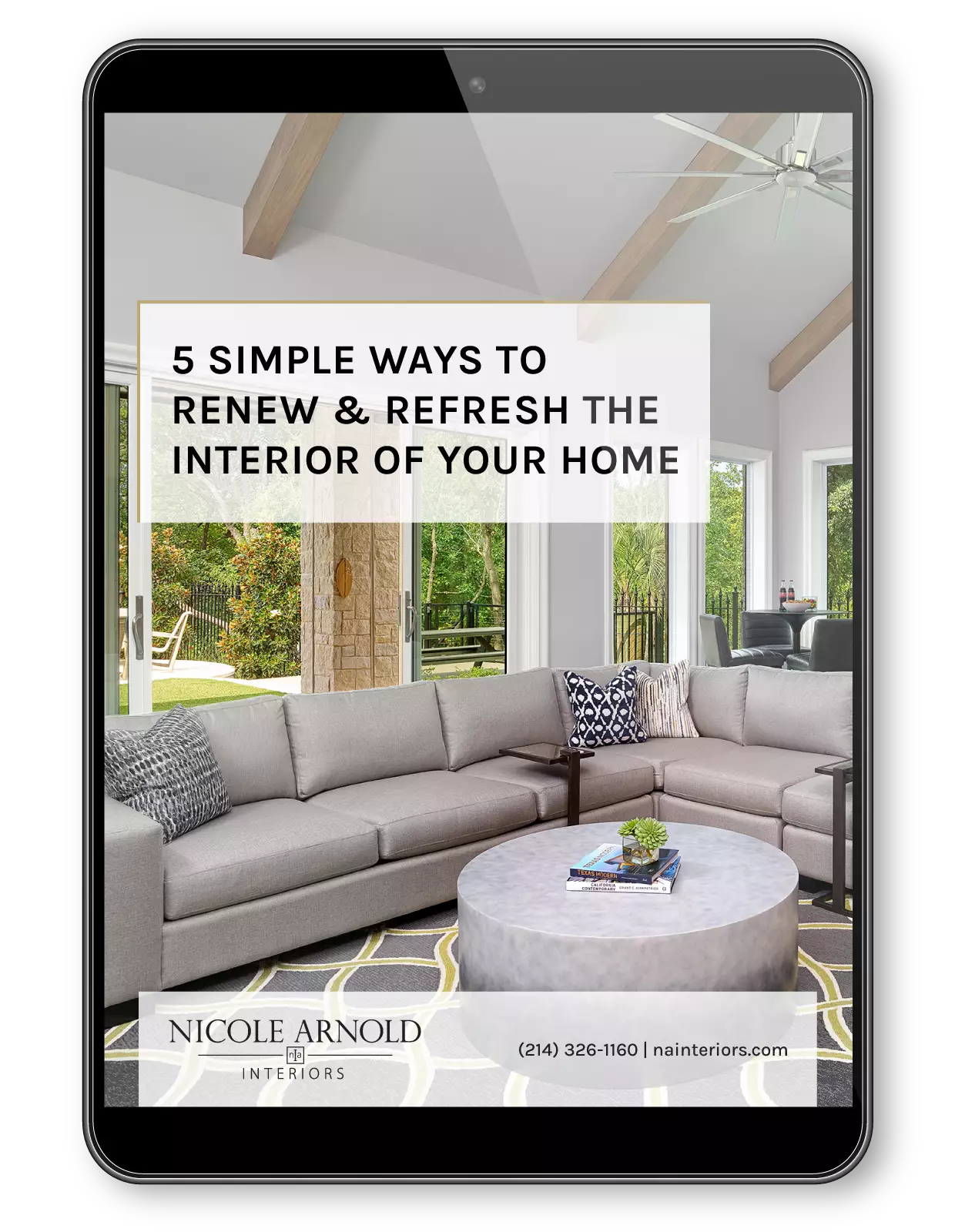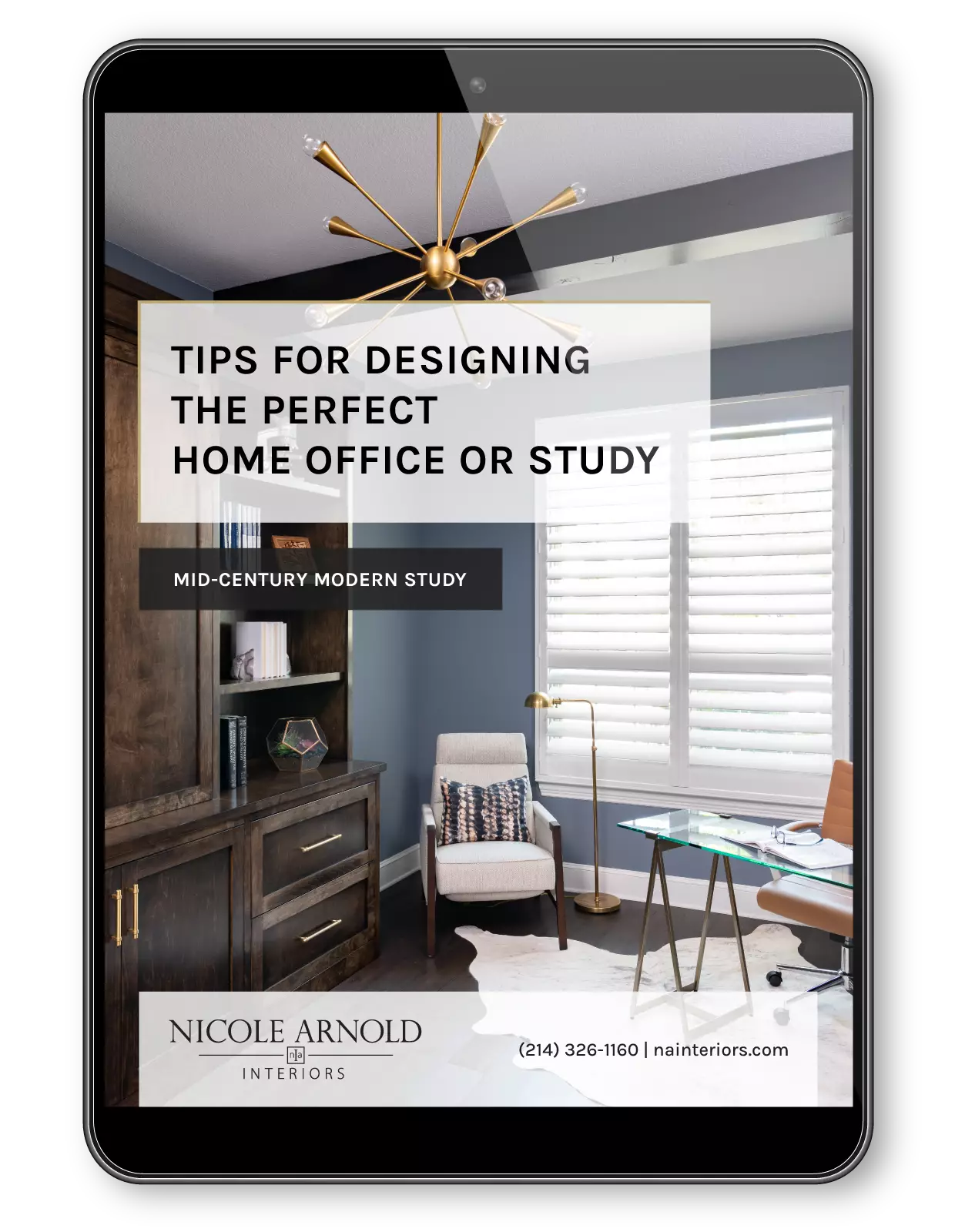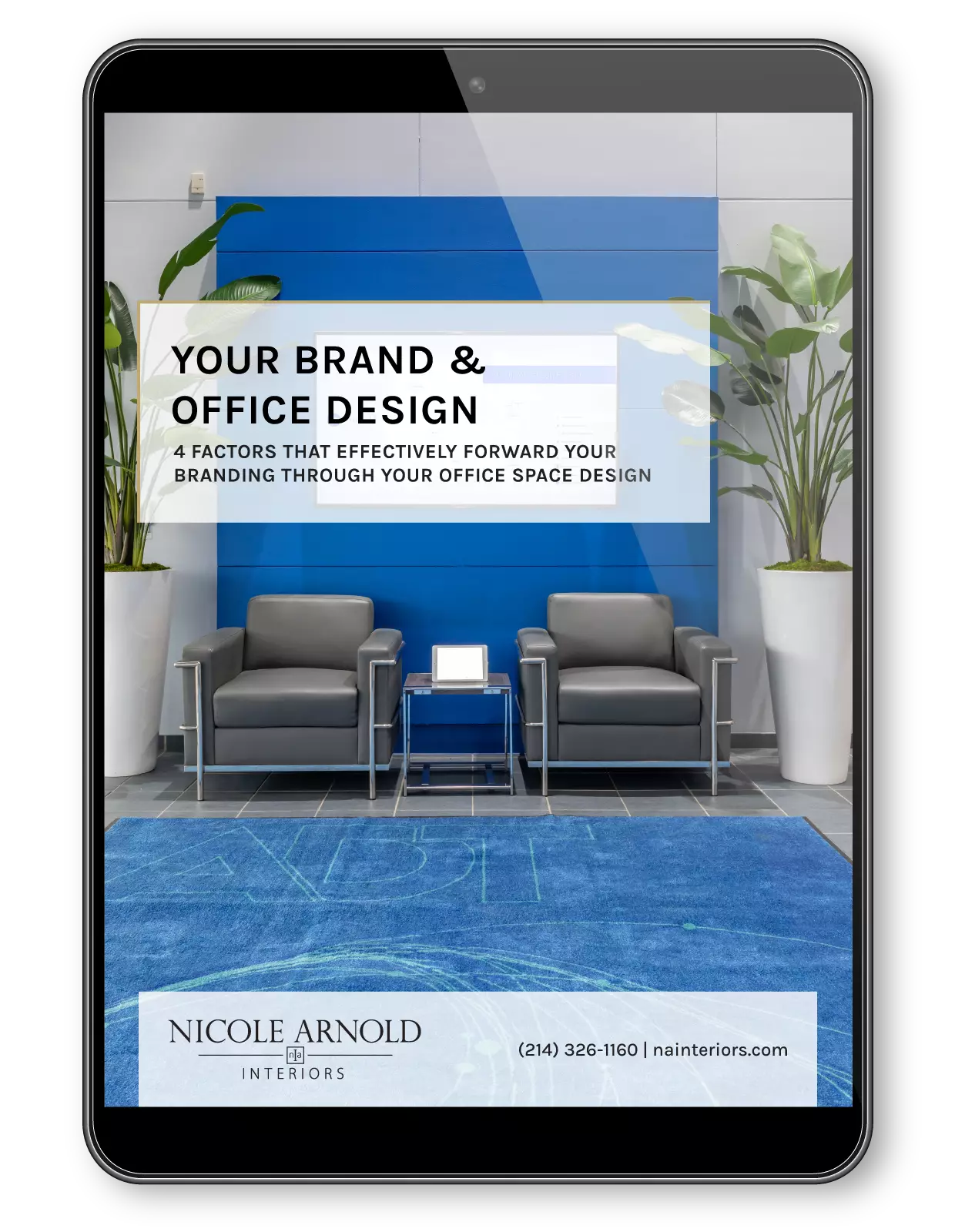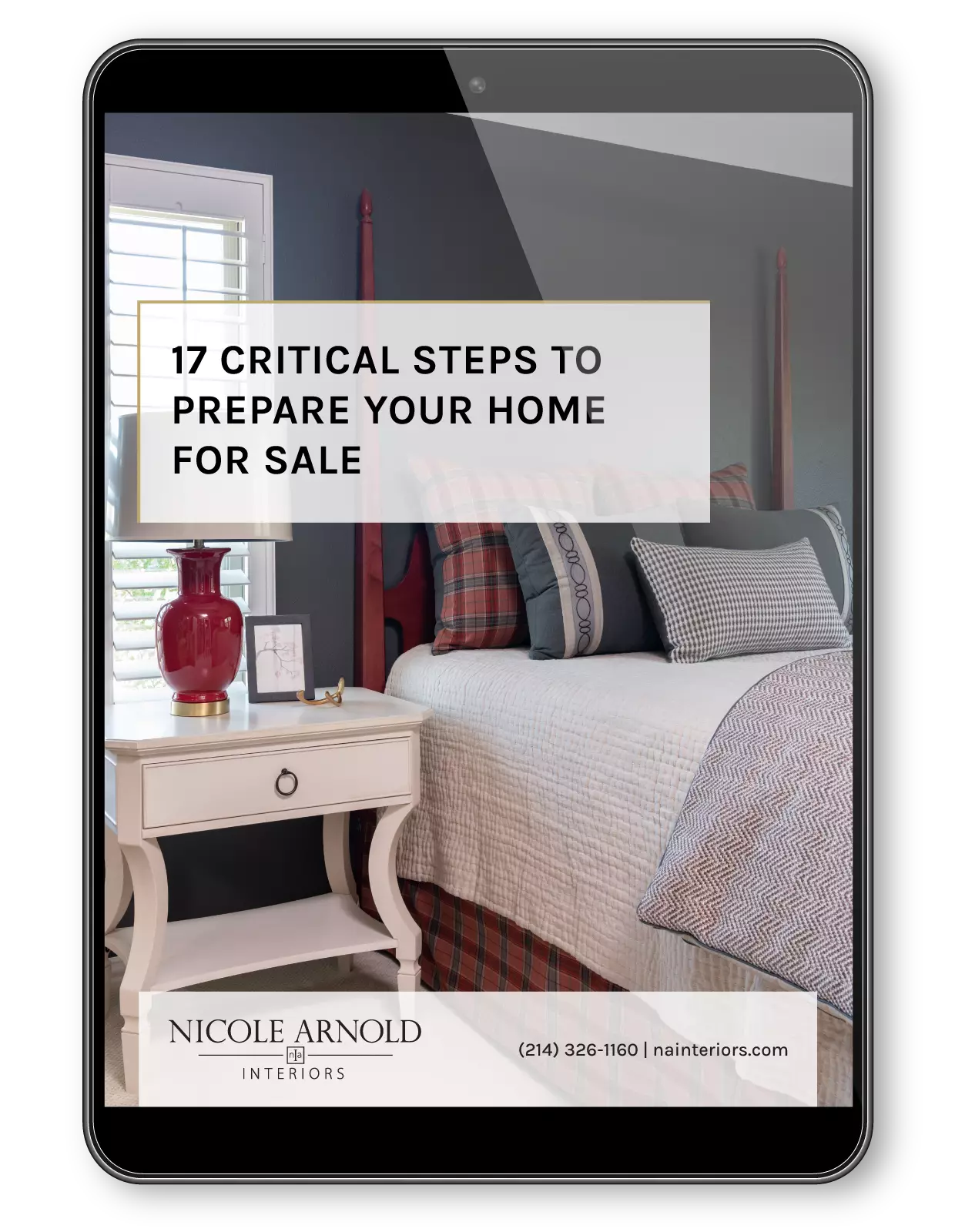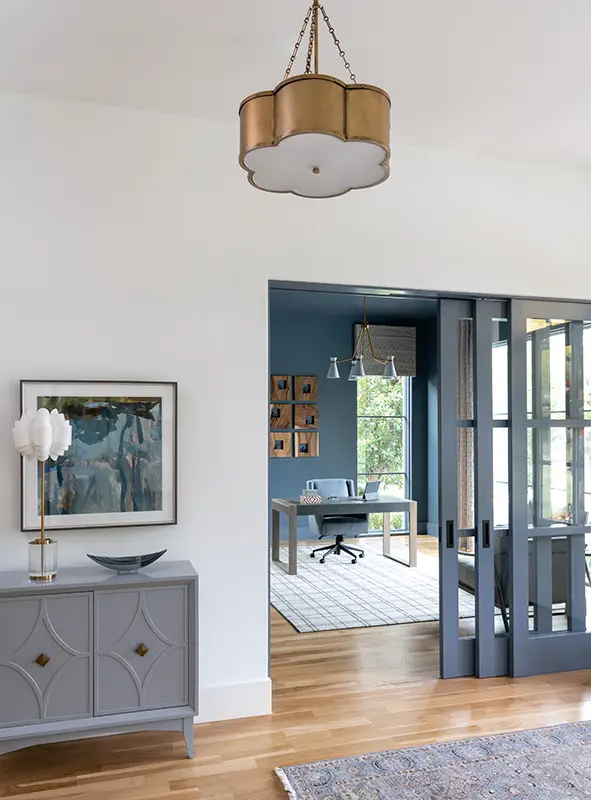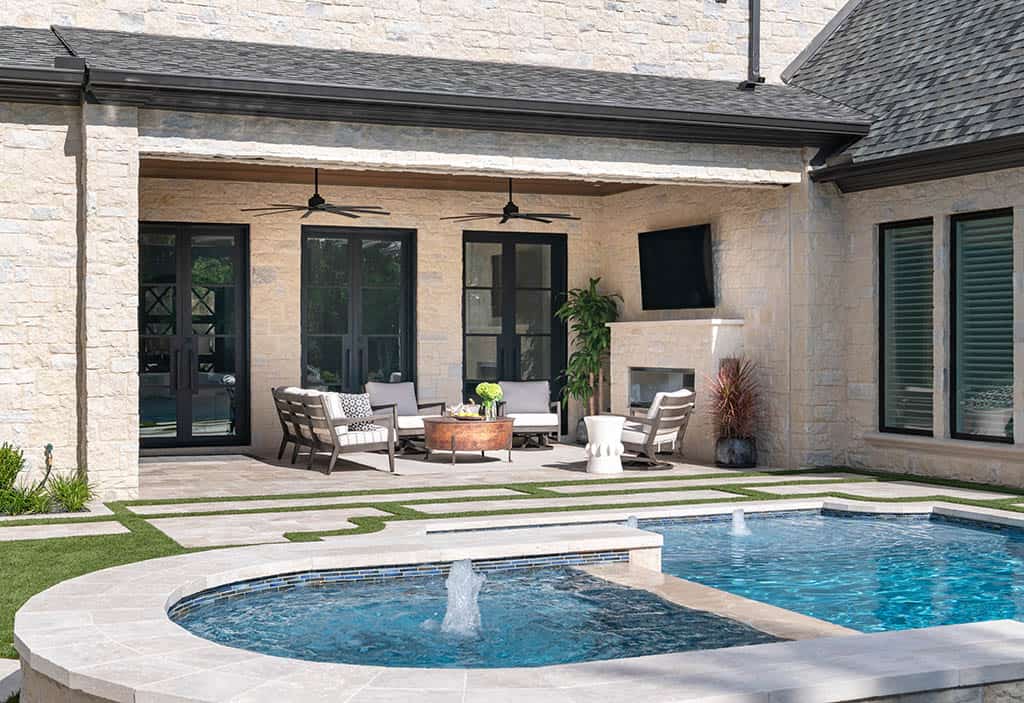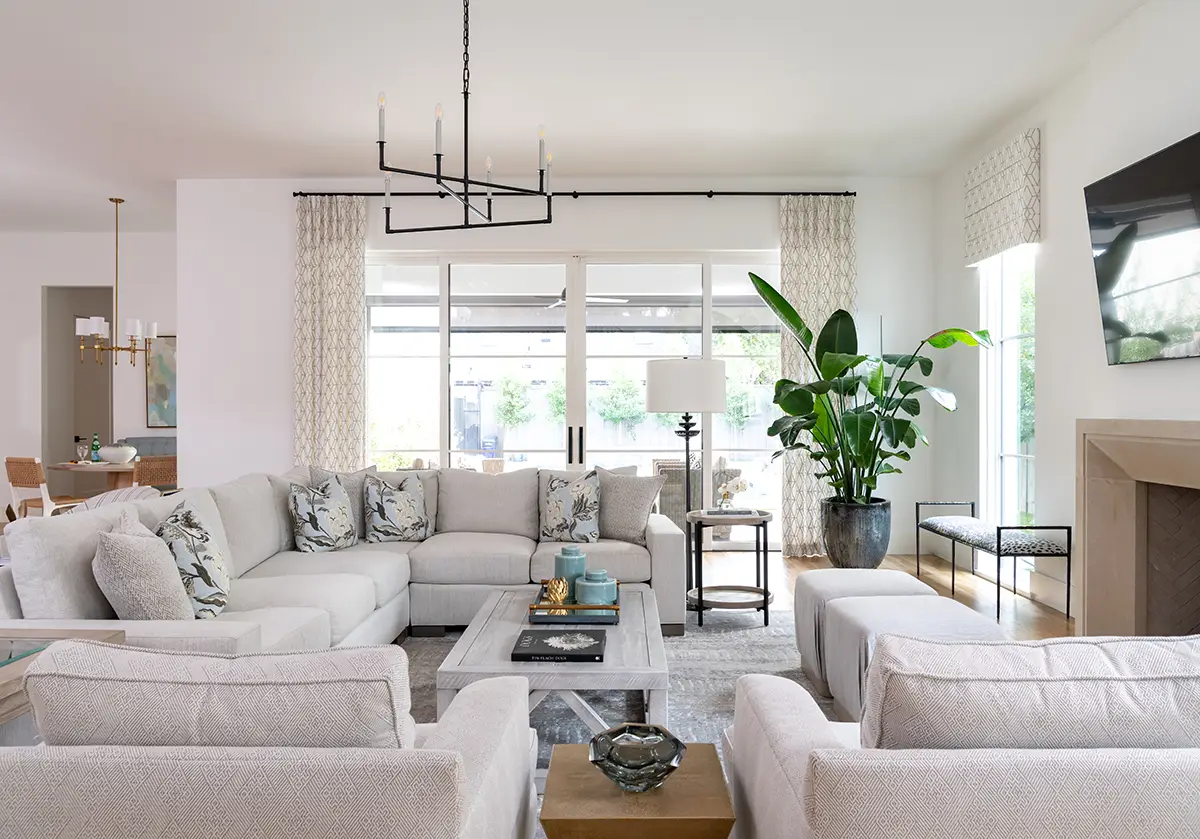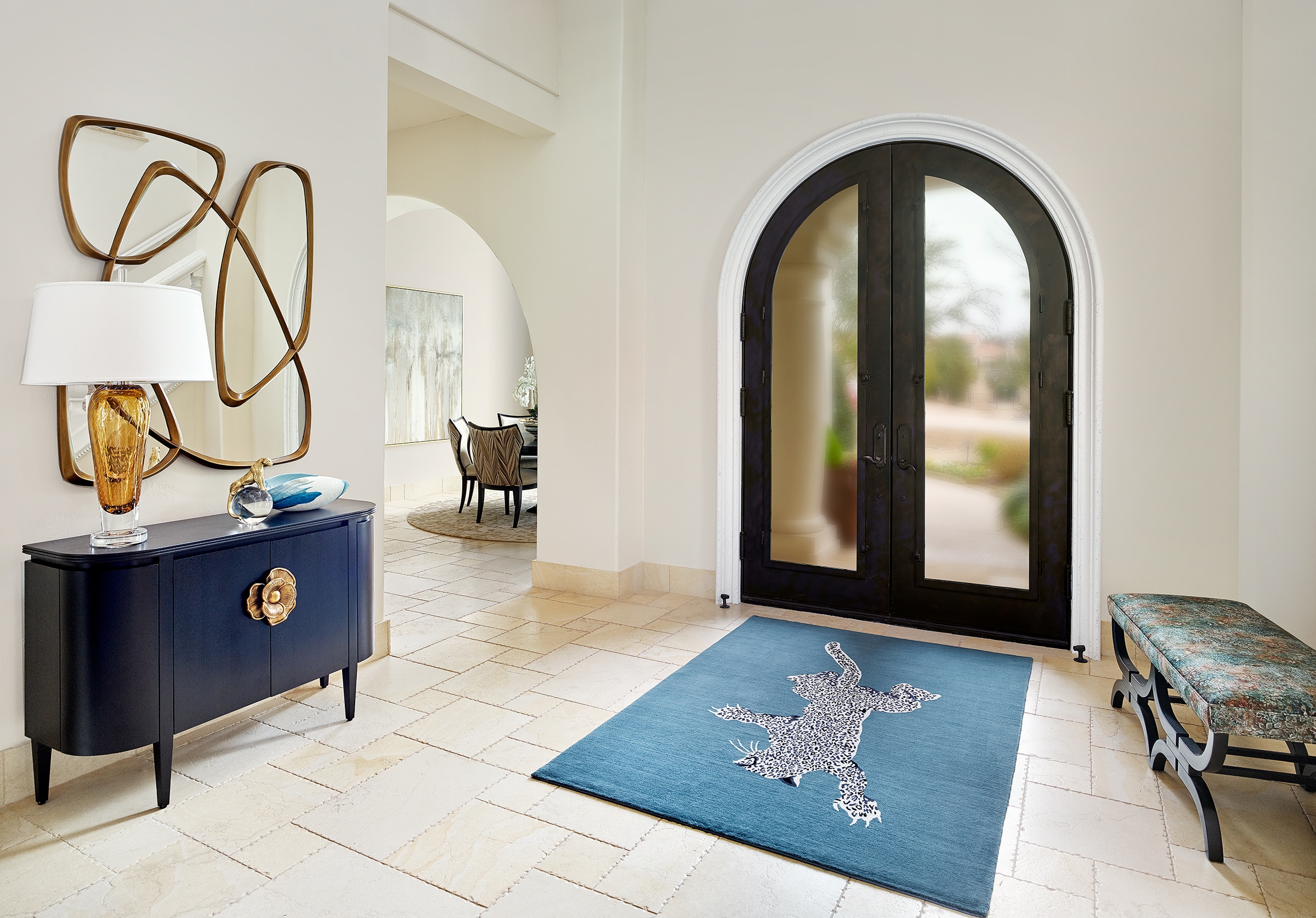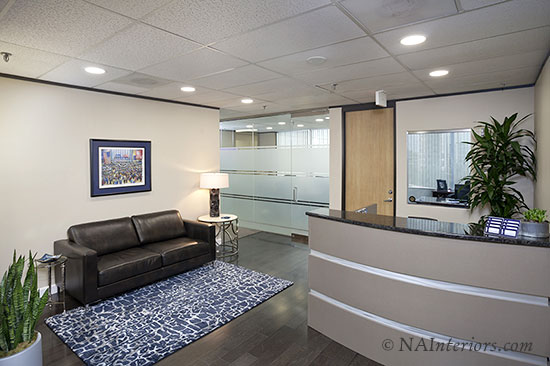
We used plants, accent lighting and an area rug to help define this office space.
Like the image? Hover or tap to share it on Pinterest, Facebook and more.
We are often confronted with the age-old question: Do we have to fill every space?
When designing a room, it’s okay to have some negative space—your eye needs a place to rest. If too much is going on, you risk overpowering your design and creating visual “clutter”.
I’ve found that when novices try this, the room feels naked or empty. A designer’s challenge is to create that delicate balance between busy and blank—a feat totally possible using a couple of tricks.
I’ll share a few of my favorites:
1. Complementary Accents
Let’s say you have beige walls and want something to fill the wall space but don’t want to compete with other things in the room. You could use an elegantly arranged grouping of off-white or otherwise tonal wall decorations. This creates a complementary accent which highlights the space without making competing focal points.
2. Go Green
Plants are a good way to add texture to a room. A big, open, airy palm satisfies a need to fill a large corner vs. clogging it up with a blocky piece of furniture. This maintains an open feel and some empty space in the room and shows the space hasn’t been forgotten.
3. Textures
Any sort of textures can help define a room visually. While plants are one way to do this, fabrics and other textures do the same thing. Varying hard and soft surfaces on furniture and upholstery can help give depth to an otherwise flat looking space. This is particularly important when decorating in a monochromatic way.
4. Window Coverings
Window coverings help tell the eye where a room starts and stops. Layering window treatments give depth, but be careful not to go too heavy. For example, opening curtain panels and raising woven woods or shades can visually highlight a room while limiting a weighty or bulky feel.
5. Area Rugs
If you have a big open floor, furniture can sometimes seem to be “floating” out there alone with nothing pulling it together. This can make a room look disproportionate. An easy solution is using an area rug to zone the space. A grouping of chairs off to one side of a room might look lost or incomplete, but by adding a rug under them you automatically define the space as “this is the seating area,” adding structure without extra bulk.
6. Screens
A trifold or quarterfold screen is a simple solution to add presence in a room or divide a room. A lot of times you can upholster them with a fabric, leathers or hides to pack a punch. It’s also a great way to showcase a fabric’s large-scale print that you wouldn’t normally see in a drapery’s folds or the limited area of a pillow. When you don’t need room division, standing one in a corner or hanging it on a wall can create just as equal interest.
7. Prints and Patterns
Speaking of prints, remember that large-scale patterns are great for large, open rooms because their scale aligns with the room and doesn’t overpower the space. Wall hangings like this are excellent for high ceilings. They double as a piece of art while also filling a void space. If you feel like they may become a competing focal point, use a quiet monochromatic fabric to get the large-scale effect without color being distracting.
8. Lighting
Lighting is one of my favorite solutions to fill a room, particularly in the evening time. Hanging a chandelier from the ceiling over a seating area automatically defines the area as an individual space in a room. A well-placed floor lamp next to a favorite chair can do the same thing by creating a reading zone. Directional light works where there isn’t a lot of natural light because it casts a warm glow across the space and can make it seem more full. Finally, accent lighting also can cause an empty area to appear like something is in that spot and give more presence to that space than one without light.
Subtle hints and visual cues can help you define a room so that it’s comfortable and balanced while at the same time maintaining that important flow with plenty of negative space. This is one of the more delicate aspects of any design project, but with simple tricks like these and a good eye you can create the exact look and feel you desire.


